Reactive mine clearance unit Python (UK)
Installation of mine clearance Giant Viper differed simplicity of design and simple principles of operation. On the wheeled trailer were placed box for "ammunition" and the launcher. With the help of a solid-fuel rocket, a flexible elongated charge was ejected onto the minefield, an explosion that cleared the passage to a length of up to 180-200 m and a width of several meters. It should be noted that such a principle of combating explosive obstacles was proposed during the Second World War, but the first installation was not very safe, and therefore very little was exploited. In the new project Giant Viper managed to solve the main problems of the predecessor.
As the service continued, the Giant Viper installation went through a number of upgrades, including the replacement of certain components. However, this process could not continue indefinitely, and at the beginning of the last decade there was a request for the creation of a completely new demining plant. However, the terms of reference for the new project involved the use of a proven and proven principle of operation.
In fact, the Royal Engineers Corps wanted to get an analogue of the existing machine, but initially made using modern materials and technologies. This allowed to start the production of new technology in existing enterprises with obtaining optimal performance characteristics. The main technical and combat characteristics could remain at the same level as the previous model.
A new mine clearance option was developed by the British company BAE Systems. This project, like its predecessor, received the “snake” name - Python (“Python”). Again, the name was chosen with an eye on the shape of the elongated charge. Moreover, there was a reason to talk about the formation of a peculiar tradition of the name of engineering equipment.
According to the project of BAE Systems, the new demining system, in terms of its overall appearance, was supposed to resemble existing products. At the same time, it was decided to modify some units of the installation with the use of new materials or design solutions. Due to this, several operational advantages have been gained.
Like the previous model, the new "Python" is built on the basis of the simplest wheeled platform-trailer. At the same time, it was decided to use the trailer design, similar to the later versions of the Giant Viper. The previous model initially had a uniaxial chassis and needed supports, and then it was equipped with an additional axle, which simplified operation in general and preparation for firing in particular. In addition, the trailer was rebuilt using some similarity of the modular principle.
The basic element of the Python system was the simplest platform built on the basis of a frame of metal profiles. In front of the platform, a triangular towing device with a set of cables and connectors for connection to the towing vehicle was located. The central part of the frame is responsible for transporting the "ammunition". On its sides there are small platforms for calculation. At the rear of the platform was placed a prop with a launcher for the towing rocket.
Platform "Python" got a curious chassis. On each side of the trailer there were two small-diameter wheels interlocked with a longitudinal balancer. The balance bar is fixed on the support under the platform and has a spring suspension. The abandonment of the bridges used previously increased the trailer's clearance. In addition, the biaxial product can stand horizontally without additional supports. At the disposal of the calculation of the installation there is one spare wheel. It is proposed to transport it in front of the box with an extended charge - on the towing device.
On the installation of Giant Vyper had its own metal or wooden box for transportation of elongated charge. When developing a Python system, this device was abandoned. Instead, there is a large rectangular seat on the platform. It is proposed to install a box-cork with a charge. In preparation for the new salvo, this box is removed, respectively, and a new one is put in its place. Thus, the calculation does not have to move from one box to another rather heavy sleeve with explosives.
In the back of the trailer there is a rigid trapezoid support, on which the launcher is fixed. Modern technology has allowed the creation of a more advanced towing rocket, which, among other things, has led to the use of a new launcher for it. On a rigid support is placed a vertical pickup mechanism with a launch guide for a rocket. The guide is made in the form of a set of four longitudinal rods connected by several rings. From above and from below the guide is partially covered by sheets-shrouds. In the transport position, the guide is set strictly horizontally, which reduces the height of the entire product. Before shooting, it rises to a predetermined angle of elevation.
The development of rocket technology that has taken place in recent decades has made it possible to develop a new, efficient tug. The Python installation uses a L9 solid-propellant rocket, which has a simplified design. The missile received a body in the form of a cylinder with a diameter of 250 mm. Product weight - 53 kg. Reactive gases are emitted through a pair of tail oblique nozzles, which ensures rotation and stabilization of the rocket in flight. Between the nozzles at the rear end of the rocket there is a mount for the towing cable of extended charge. The rocket engine is started on command from the control panel due to an electrical impulse.
The extended charge for the "Python" has also been reworked to reflect the achievements of progress. The sleeve with a length of 228 m is made of polymer fiber, which is distinguished by high strength and low weight. Inside such a shell is placed a charge in the form of a kg of explosive 1455 type PE-6 / AL. The characteristics of the explosive allow the elongated charge to flex freely enough in any direction. The ends of the charge are equipped with modern types of fuses, providing undermining on command.
According to the developer, the elongated charge of the new model is safe. A bullet or a fragment may leave a hole in the outer shell and damage the internal explosive, but the detonation of the latter is excluded. In addition, single lesions of different parts of the charge do not lead to a drop in the strength of the structure and the impossibility of full application. Even a damaged sleeve can leave the box, fly behind the rocket and lie on the minefield.
For towing behind the L9 rocket, an extended Python charge uses a metal cable several meters long. It is also equipped with a longer cable, designed to limit flight range. In order to avoid entanglement during storage and transportation of the charge, this cable is rolled up and fixed with a drop sheath. In addition, it is placed in a separate container with a broken lid, located at the bottom of the closure.
Reactive installation of mine clearance Python in its dimensions is almost no different from its predecessor. The total length of the product does not exceed 4-5 m with a width of no more than 2,5 m and a height of about 2,5 m. Own weight of the unit, without a rocket and an elongated charge with a box, is only 136 kg. In the combat position, the mass of the complex reaches 1,7-1,8 t.
The towed installation can be used together with any tractors. In practice, they are used with engineering tanks Trojan AVRE. "Python" must go directly behind the armored car, which can dramatically reduce the time to prepare for the shot, as well as protect it from shelling from the front hemisphere. After preliminary preparation, firing with an extended charge can be carried out immediately upon reaching a given position.
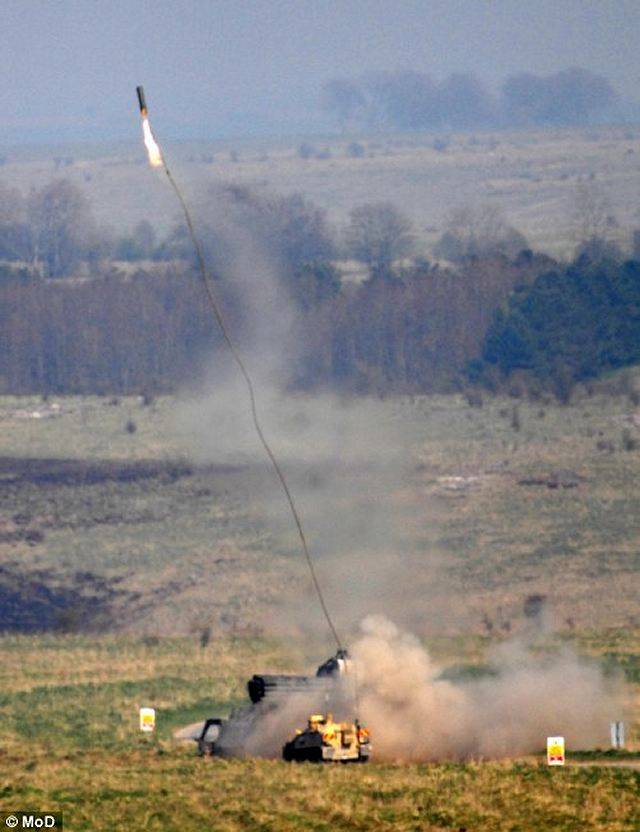
Launch rocket
The relatively small size and weight of the demining plant led to curious possibilities. Engineering armored vehicles can simultaneously tow more than one long-haul trailer. In this case, the Python installations are connected by a train, one after the other. In this case, it is possible to control the launches separately. Thus, several elongated charges are at the disposal of military engineers, which can be used consistently and without returning to the rear for "recharging."
By the principle of action, the modern “Python” is no different from the old Giant Viper installation. After entering the firing position, the calculation gives the command to launch the rocket. That, taking off, pulls behind itself a towing cable to which the extended charge is attached. Leaving the closure, the charge begins to pull the restrictive cable, before being in its own container. This cable provides the laying of the charge at a given distance from the launcher. After the charge drops to the ground, an explosion occurs. If necessary, you can connect two charges in series, resulting in a sleeve with a length of 456 m.
According to official data, undermining the extended charge of Python provides damage with disabling or triggering 90% of anti-personnel and anti-tank mines on a length of at least 180 m and a width of at least 7,3 m. Such a passage is sufficient for use by people and equipment. Sequential use of several charges in one area allows you to create wider or longer passages - depending on the parameters of the mine-explosion barrier and the specifics of the operation.
In the middle of the two thousandth, the company BAE Systems has submitted for testing an experimental technique of a new type and the first batch of elongated charges for it. Inspections at the site showed that, in terms of combat qualities, the advanced installation of Python is at least as good as its predecessor. In addition, certain advantages over it were confirmed. Installation received a positive recommendation, and soon entered service with the Royal Engineers Corps.
The simplicity of the design allowed in just a few years to produce the required number of towed units, with the help of which the re-equipment was carried out. In the shortest time possible, outdated installations of the Giant Viper were written off, and new Python took their place. Initially, this technique was used only in exercises, but it was soon attracted to solving real combat missions.
In the 2009 year, the 28 th engineering regiment, equipped, among other things, with Trojan AVRE armored vehicles and Python rocket clearance installations, went to Afghanistan to work as part of the international coalition. In February next year, these samples took part in the operation "Moshtarak". On the way of the advancing troops there were minefields, which should be neutralized in the shortest time. To solve such problems were abandoned installation "Python". Royal engineers successfully coped with their work and ensured the earliest access of other units in the specified areas.
According to various sources, in the future, British military engineers had several times to eliminate the enemy’s mine blast barriers in different parts of Afghanistan. In all cases, the Python system has confirmed its characteristics. It proved to be an effective means of destroying anti-tank and anti-personnel mines, as well as improvised explosive devices. As far as is known, demining installations were used only for their intended purpose. Extended charges were not used as engineering ammunition for the destruction of any structures, as was the case with foreign weapons this kind.
Several years ago, BAE Systems upgraded the Python system, aimed primarily at improving performance and combat performance. First of all, the designers replaced the old explosive in charge with a new mixture of ROWANEX 4400M, which increased the resistance to damage. The design of the sleeve and its equipment was also improved. With 2016, the elongated charges of the improved version come to the army. Providing increased performance and efficiency, such charges retain full compatibility with existing installations.
The Python missile clearance unit entered service with the British army not too long ago, but already managed to completely oust the older and less sophisticated models of its class. As tests and applications in real operations have shown, such a system copes with its duties perfectly and deservedly takes its place in the park of equipment of the Royal Engineers Corps. The specificity of using such products is such that they can maintain the required potential for a long time. Thus, it is quite possible that the installation “Python” - like its predecessor - will last for many more years and will retire no earlier than mid-century.
On the materials of the sites:
http://army.mod.uk/
https://baesystems.com/
https://armyrecognition.com/
http://news.bbc.co.uk/
https://express.co.uk/
https://theengineer.co.uk/
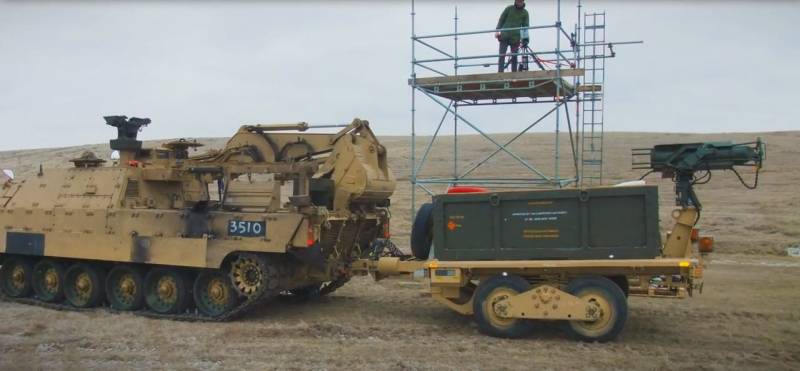
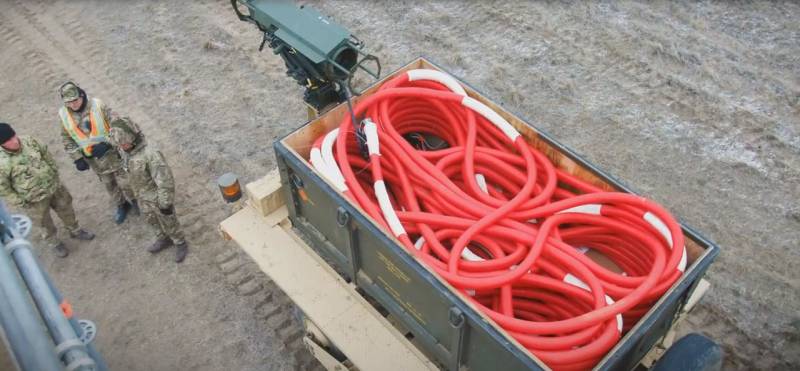
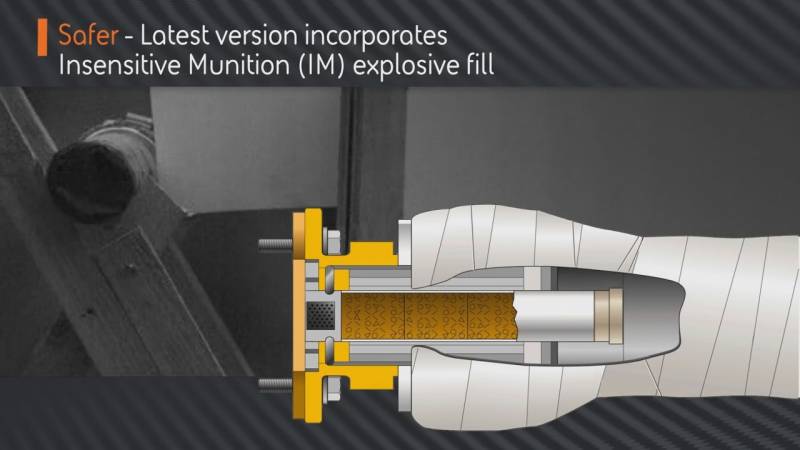
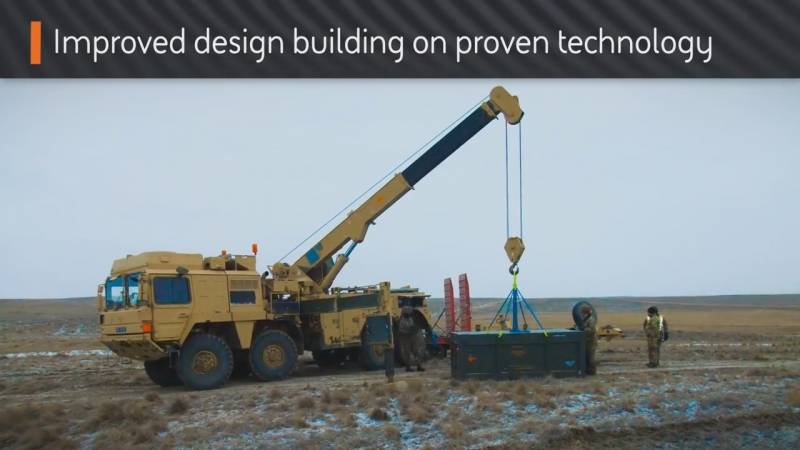
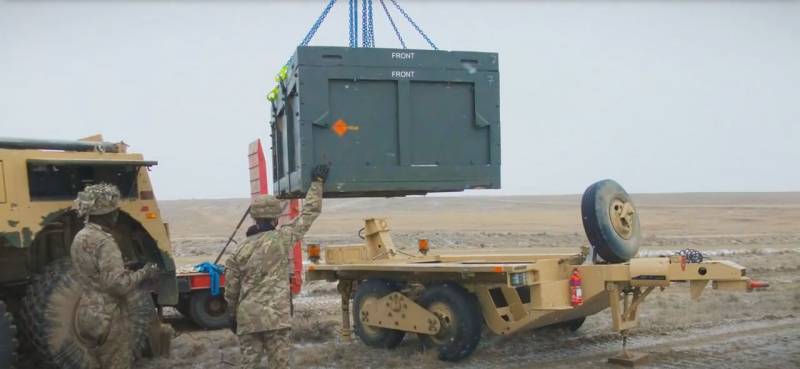
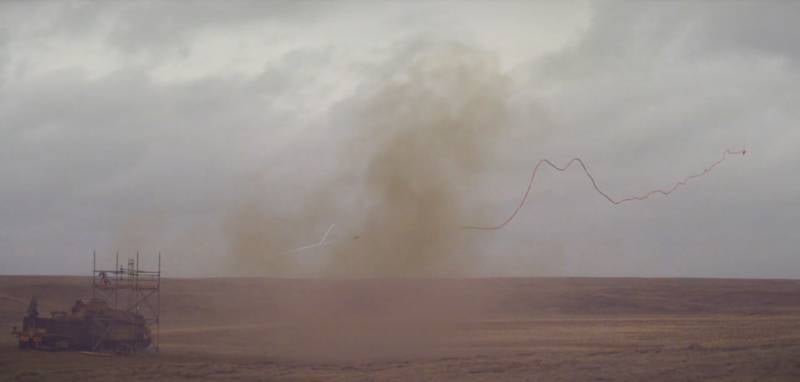
Information